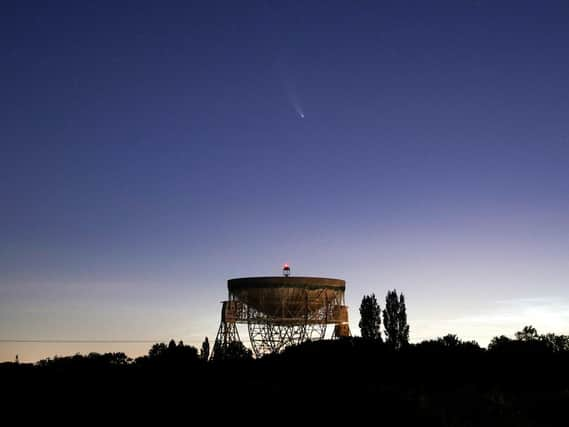Stargazing for Neowise | Jack Marshall's column


Pitch black and eerily quiet, it’s the kind of environment which is more suited to delinquency or burying bodies than casual jaunts in the name of fun.
And yet this is just where myself, my brother, and my dad found ourselves last weekend. Twenty minutes prior, the trip hadn’t been on the cards. The telly was on, hot chocolate had been taken, and yawns were rattling about the house. Then my father burst into the room and said that most ‘dad’ of phrases. “Do you two want to see something cool?”
Advertisement
Hide AdAdvertisement
Hide AdThe cool thing was the comet Neowise. Only discovered in March, the comet is currently zipping about a mere 65 million miles away which, in space, is skin-of-your-teeth close. And so armed with some binoculars, we set out for a bit of stargazing in an attempt to try and catch a glimpse of something 4.6 billion years old.
Before getting all existential and soliloquising about how profoundly insignificant such amazing things make you feel, first thing’s first: it was bloody freezing. It was so brisk that our periods of scanning the night sky like covert operatives had to be tactically interspersed with stints warming up in the car with all the lights turned off so we could maintain our night vision.
But anyway, enough moaning; back to the three-mile comet travelling across our universe at 40 miles per second.
Following the curve in the Plough, we traced across the inky black and eventually spotted it: a faintly blue smudge with a definite cosmic trail. When you had it, it was eerily easy to find it again in the vast, galactic expanse, as if there was a magnet on the end of the binoculars drawn towards this weirdly alien thing. If you had it in your crosshairs and slowly lowered your bins, you could even make it out faintly with the naked eye.
Advertisement
Hide AdAdvertisement
Hide AdInching towards the edge of our Solar System, Neowise won’t be visible from Earth for another 7,000 years by the time August rolls around. With that in mind, we gawped for long, quiet minutes. Then we headed home. Freezing but pleased, it suddenly dawned on us: we could have spotted it from the living room window all along.
Comment Guidelines
National World encourages reader discussion on our stories. User feedback, insights and back-and-forth exchanges add a rich layer of context to reporting. Please review our Community Guidelines before commenting.